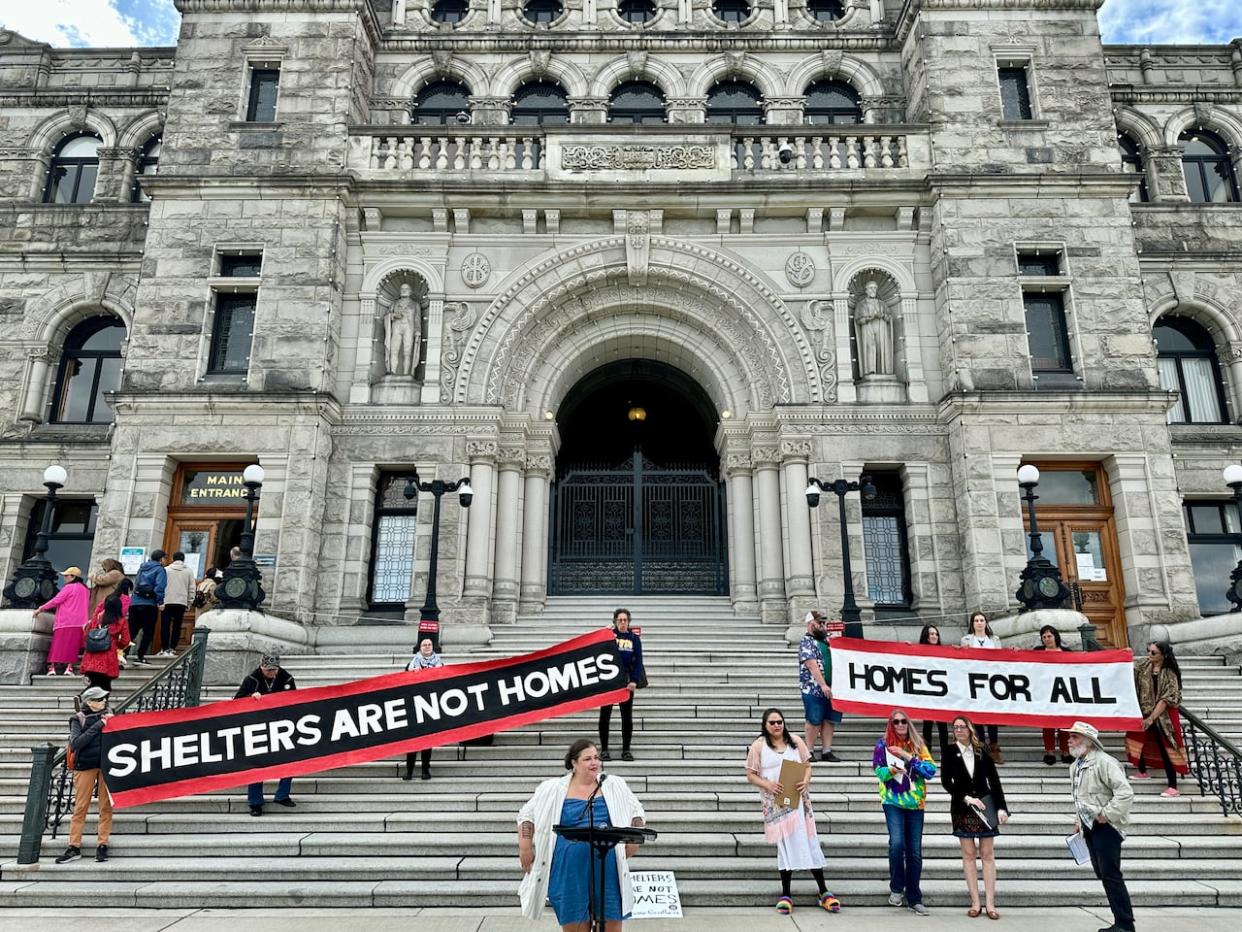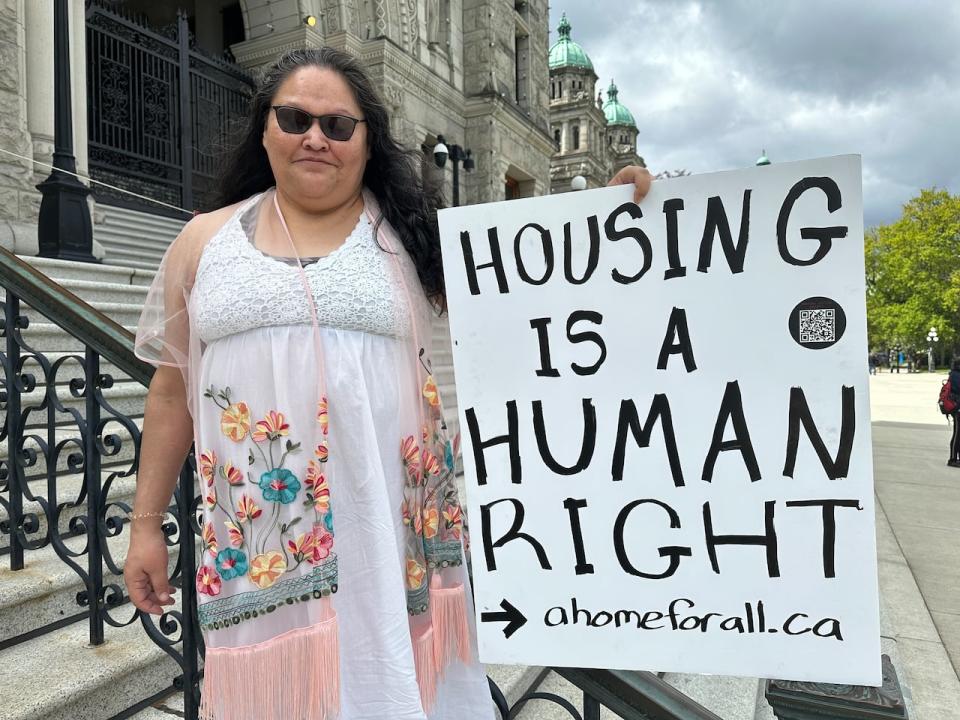Group says 'affordable housing' is not affordable to those who need it most

A single mother of two with an entry-level job at the Capital Regional District would not be able to afford the affordable housing the district itself provides.
That's just one example of the ongoing challenges in getting more people housed that are outlined in a new report from the Housing Justice Project, a Greater Victoria-based group of 13 people who between them say they have 156 years of lived experience with homelessness.
Their report looks at housing options available to people trying to get out of homelessness in the region — and finds them inadequate.
According to the most recent point-in-time data, from 2023, there are at least 1,665 people living without a home in Greater Victoria.
The Housing Justice Project assessed the viability and safety of several housing options: living on the street or in parks, overnight shelters, transitional programs, affordable housing and market rental.
It concluded 2,000 units of deeply subsidized, permanent homes are needed each year in Greater Victoria so people can get out of homelessness and into safe, secure housing that will help them thrive.

Cheri Jacobs, who has been homeless in the past, is a member of the Housing Justice Project. (Mélinda Trochu/Radio-Canada )
While shelters can be seen as a way of getting people off the streets, advocates point out that they are not a secure or safe form of housing.
"Shelters are not homes!" said advocate Toni Love, speaking at a rally at the B.C. Legislature Tuesday, where the report was launched.
"They are often unclean and lack many of the elements most people would associate with a home: privacy, a door that locks, the ability to cook a meal or play with your child," said Love.
The report also points out that most shelters close during the day, meaning people cannot store belongings there.
They often fill up and sometimes you need to call ahead to secure a spot — but not everyone who is homeless has access to a phone.
The report also lists instances where people have felt unsafe staying in shelters.
While more long-term than shelters, transitional programs still have limits on the length of stays — meaning people are sometimes forced to leave before they have a more permanent place to live.
They're also not currently covered under the Residential Tenancy Act, which means there's no recourse if evicted.
While there is a range of affordable housing available in the region, wait lists are often long and the definition of "affordable" is broad.
For example, to qualify for a three-bedroom unit of affordable housing offered by the Capital Regional Housing Corporation, an applicant must make a minimum of $82,001 annually.
Love, a single mother of two, points out an entry-level position with the district pays $52,000 a year.
Housing rules require her to have a room for each of her children, so selecting a smaller apartment is not an option.
To be truly affordable, the group says units need to be rented at $500 to $1,000 a month.
That means rent could be fully covered by the shelter allowance given to British Columbians on income assistance.
According to the annual rental rate report from the Canadian Mortgage and Housing Corporation, released in January 2024, the average rent for a two-bedroom, purpose-built rental unit in Victoria was $1,839.
Zac de Vries, a councillor in Saanich, B.C., and chair of the Capital Regional Housing Corporation, says since 2017 it has built or approved 361 units at that lowest subsidy level, as well as 1,500 units at other levels of affordability.
But he acknowledged the point of Love's example.
"I think it is representative of one of the great challenges that we're currently facing, which is that even in our government-supported projects, the cost of construction and other factors has resulted in rents that are challenging."
De Vries said it's the responsibility of all levels of government to build housing that is affordable to a variety of income levels — from people on income assistance, all the way up to middle class families.
B.C. Housing Minister Ravi Kahlon said building 2,000 deeply subsidized units every year is an ambitious goal.
He said the province has built 3,000 affordable housing units in Victoria over the past year, and that the focus is on providing housing for a mix of income levels — including 30 per cent of units at shelter rates.
"It's good for the community, it's good for the people living in it," said Kahlon.
He met briefly with two representatives of the Housing Justice Project before their rally on Tuesday.
Kahlon said they agreed they have similar goals.
Project representatives said Kahlon was receptive to their message, and they'll continue to exert pressure on the government.


